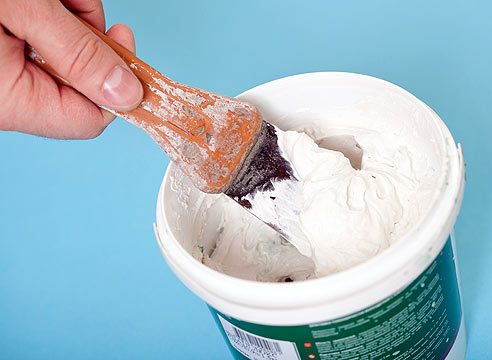Warm plasters combine heat-insulating and finishing properties. They are applied on the walls as ordinary plaster and are distinguished by high energy-saving qualities.
Content
Types of warm plastering
This coating is divided into two main types:
1. Materials intended for finishing finish (have excellent thermal insulation characteristics and have good strength).
2. Plasters intended for draft finish (used as thermal insulation of walls).
Types of warm plasters depending on the filler are divided into:
1. Having a mineral filler:
- with vermiculitis and strolled perlite;
- with granular hollow foam-glass balls.
2. Having organic composition (expanded polystyrene).
Advantages and disadvantages of warm plaster
The pluses of the coating include:
- durability;
- moisture resistance;
- ease;
- plastic;
- vapor permeability;
- good adhesion;
- environmental friendliness;
- fire safety;
- before applying plaster does not require alignment of the walls;
- simple and efficient to use;
- has a precise balanced solution composition;
- creates a monolithic circuit of thermal insulation;
- it can be applied without using the reinforcement grid (with the exception of corners and seats with cracks);
- can be used as an finishing finish.
Disadvantages:
- is not the main finish coating;
- creates a thick heat-insulating layer as opposed to wool and foam.
Composition of coating
Warm plasters are a multicomponent solution having various additives: plasticizers, hydropobicators, as well as substances that provide vapor permeability. In this case, the main part of the mixture is the lungs porous fillers of up to 2 mm. As a binder component, the White Portland cement is served here or lime.
Scope of material
- thermal insulation ceiling floors and floor;
- insulation of sewage, cold and hot water risers;
- finishing facades of buildings;
- warm plaster for facade works are covered with walls when laying wells;
- conduct finishing internal work;
- the coating is used as an insulator of door blocks and window slopes;
- apply for sound, thermal insulation of internal and outer walls of the house.
Warm plaster with their own hands
Preparation of mixes
We will need:
- 1 part of cement;
- water;
- plasticizer or PVA glue, it is added at the rate of 50-60 g per 1 bucket of cement;
- 4 pieces of perlite or granules of vermiculite.
Progress:
- we are dragging in water with glue or plasticizer, mix thoroughly;
- connect the filler with dry cement;
- we gradually add water to obtain plastic thick mass;
- we give the solution for 15 minutes.
Preparation of the basis
We clean the walls from garbage and dust, wetting water and, if necessary, soil. In the event that the surface needs to be strengthened, mounted a special plaster grid with large cells.
Applying warm plaster
Warm plaster is not applied with a very thick layer - up to 4 cm. If desired, the procedure can be repeated 2-4 times. At the same time, the previous layer must be good.
Recommendations:
- the thickness of the 1st layer of plaster should not exceed 2 cm;
- this building material is not the only insulation coating;
- plaster increases the weight of the building structure;
- prepared solution must be used for several hours;
- to check whether the mixture is ready, it is enough to burn it with a trowel and turn over. If the solution holds on the instrument and does not fall - the composition is ready for use;
- the finished agent can be applied with machine and manual way;
- with increased air humidity and low temperatures, the drying period of the plaster layer is extended.
Take and check how work was done on the application of warm plaster, it is recommended in 21-30 days. The most common issues are:
- cracking;
- detachment;
- changing the geometry of the room.
Testing the "geometric" quality of plastering work is carried out using a bubble level, a plumb or a special two-meter rail. We apply the tool to the surface and looking for the lumen. The permissible deviations from the horizontal (vertical) should not exceed 0.3 cm per 1 m.
Resumption of building materials:
- 10-14 kg / m.kv at the magnitude of the plastering layer 2.5 cm;
- 18-25 kg / m.kv at the magnitude of the plastering layer 5 cm.
A little more about the coverage
- to create a good isolation from air noise (car sounds, television, foreign conversations), the building materials used should be "thought out", have a fibrous structure, and the thickness starts from 5 cm;
- to ensure insulation of the room from shock noise (sounds of steps, drops of objects, knocks), the used building materials must be elastic, namely, to remind the composition of the rubber.
As we can see, warm plaster does not respond to any of the listed requirements, respectively, we can conclude that information about the wonderful noise insulation characteristics of this material is slightly exaggerated.
Cheerful plaster, video:
























